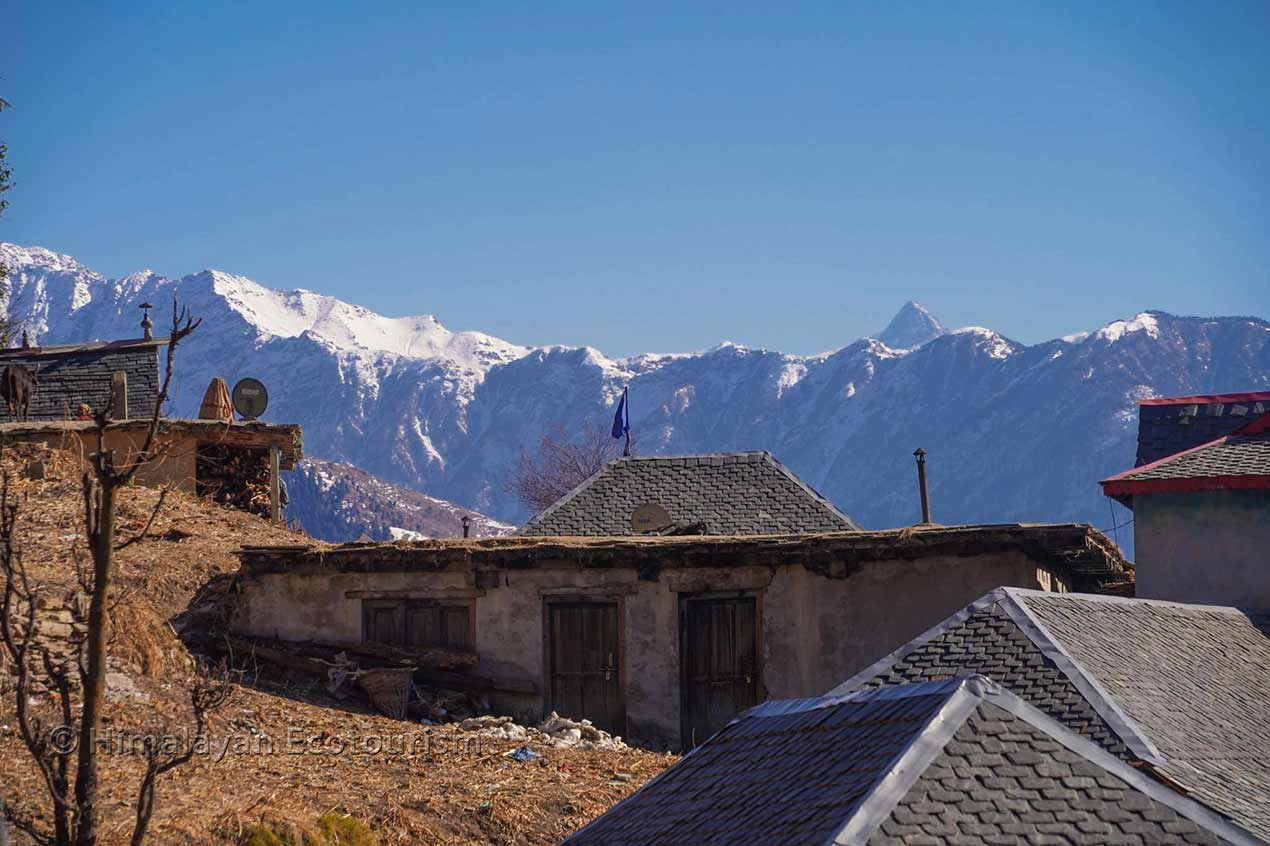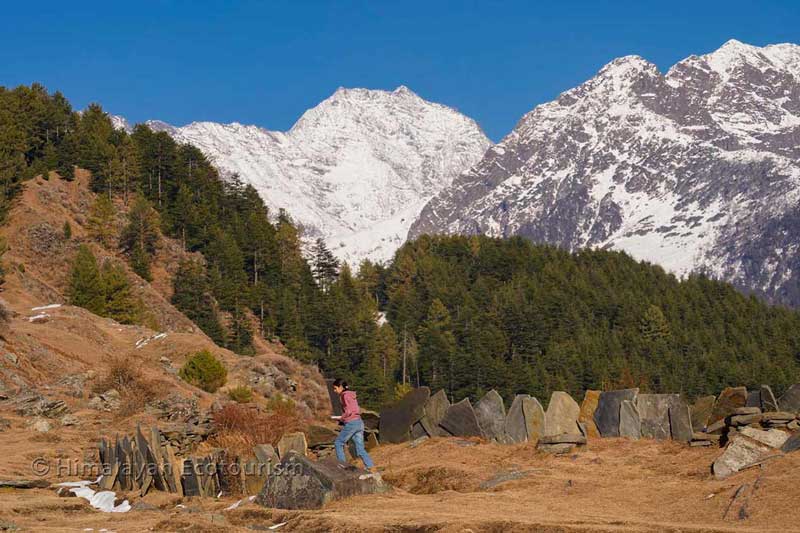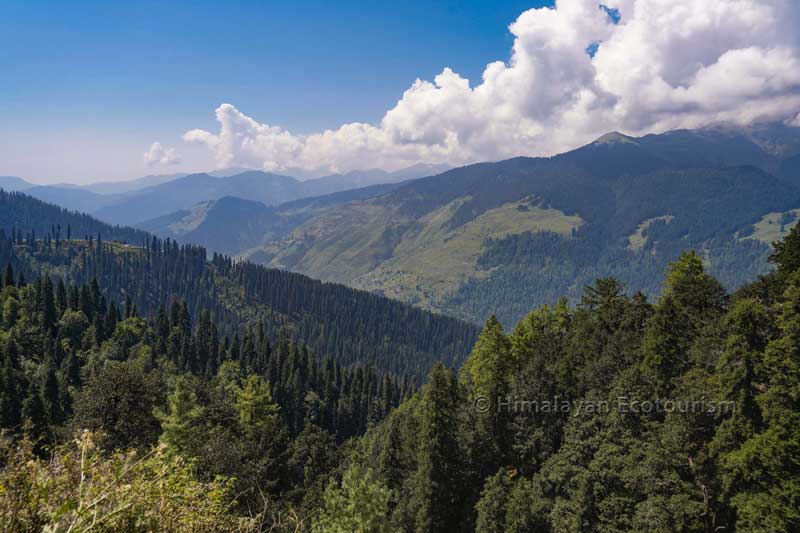Places to visit in the Churah valley

The Churah Valley is not just one valley but a network of interconnected valleys, each with its own unique charm and identity. Fed by the waters from the Sach Pass region, these valleys collectively form a breathtakingly beautiful and culturally rich landscape that remains largely untouched by mass tourism. While they share common features such as climate, ecology, and cultural heritage, each valley tells its own story, with distinct landscapes and histories waiting to be discovered.
For travelers willing to go beyond a cursory drive-through, the Churah Valley offers countless opportunities for exploration. Whether on foot or by car, spending several days here will reveal hidden gems – from centuries-old temples and pristine lakes to cascading waterfalls and picturesque villages nestled in the mountains.
Each corner of the Churah Valley has something special to offer, whether you’re seeking adventure, spiritual retreats, or simply a peaceful escape into nature. With every turn, you’ll encounter landscapes that rival those of the more famous Himalayan destinations but with none of the crowds.
If you’re planning your trip to the Himalayas and are intrigued by the allure of this undiscovered jewel, we’d be delighted to help you craft your perfect itinerary. Whether you’re looking to immerse yourself in the valley’s natural wonders or simply add Churah as a meaningful stop on your Himalayan journey, this page will guide you to the must-see places and experiences that make the Churah Valley so special.
Devi Kothi temple
Location and Significance
The Devi Kothi Temple, dedicated to Chamunda Devi (sometimes referred as Kali Devi in the Hindu mythology) is located in the village of the same name, 11 km away from the central small town of Bairagarh, in the valley of the majestic Gadasaru peak and sacred lake. It is renowned for its striking architecture, ancient murals, and vibrant cultural traditions. The temple is a revered site for the locals who consider Goddess Kali the protector of the region.
Architectural Marvel
The temple showcases the Kath-Kuni style of architecture, a traditional Himachali building technique that uses interlocking wooden beams and stone to create earthquake-resistant structures. The intricate carvings on the wooden pillars and doors reflect the artistic skills of the craftsmen.
Murals and Paintings
Inside the temple, the walls are adorned with beautiful murals painted in the Pahari style, depicting scenes from Hindu mythology, particularly stories of Chamunda Devi. These paintings are believed to date back to the 18th century and provide a glimpse into the region’s rich artistic heritage.
Mythological Connections
According to local folklore, Devi Kothi was chosen as the abode of Chamunda Devi after she descended from the heavens to protect the valley. People from surrounding villages still gather here during festivals to seek her blessings.
Festivals and Rituals
During Navratri, the temple becomes a hub of activity with special prayers, offerings, and rituals. A large number of devotees, both local and from afar, visit the temple to participate in these celebrations.
Mangli village and its waterfall
Mangli is perched at the very edge of the valley opposite Devi Kothi. This peaceful hamlet offers a glimpse into a simpler way of life that seems untouched by time. The road ends just before the village, preserving its tranquility and ensuring an escape from the hum of modernity.
Life in Mangli revolves around the essentials – cultivating pulses and vegetables, grazing livestock such as cows, buffaloes, and sheep, and gathering wood and medicinal herbs from the surrounding lush forests. The villagers live harmoniously with nature, embracing the relaxed rhythm of life in this remote Himalayan paradise under the sun.
One of Mangli’s highlights is the stunning cascading waterfall that graces the opposite side of the valley. While it appears deceptively close, reaching the waterfall is an adventurous three-hour trek, making it an excellent day excursion for those visiting the village. The journey rewards you with not just the waterfall but also breathtaking views and a deeper connection with the pristine environment.
Although Mangli doesn’t yet have homestay facilities, Himalayan Ecotourism is collaborating with villagers to open their homes to respectful visitors. Starting in the summer of 2025, a few families plan to welcome guests, offering an authentic experience of Himalayan village life. Whether you come for a day hike or to stay longer in the future, Mangli promises to leave an indelible impression of peace, beauty, and timeless simplicity.
Mehal Naag temple in village Majur
Deity and Significance
The Mehal Naag Temple is dedicated to Naag Devta, the snake deity worshiped as the protector of the valley and a symbol of fertility and prosperity. Naag worship is deeply ingrained in the culture of Himachal Pradesh, and this temple is one of the prominent shrines in the region.
Location
The temple is located in the village Majur lying itself in the Mangli valley. Visiting the Mehal Naag temple can be easily associated with a visit to Mangli village. You can reach Majur village by taking a link road that is connected to the main road two kilometers before Mangli.
Local Legends
One of the legends surrounding Mehal Naag is that the deity once saved the valley from a severe drought. It is said that after the villagers performed a ritual and sought his blessings, rain fell and the crops were saved. Since then, the deity is revered as the guardian of the valley’s ecology.
Cultural Importance
The temple is a center of community gatherings during fairs and festivals, where locals offer milk, flowers, and other items to appease the deity. It is also common for people to undertake a pilgrimage to this temple to seek blessings for family well-being and agricultural prosperity.
Annual Fairs
The temple hosts an annual fair during the monsoon season, which includes traditional dances, music, and offerings to Naag Devta. This event is a blend of spiritual devotion and cultural celebration, bringing together people from different parts of the district.
The Sach pass
Sach Pass – A Thrilling Gateway to the Remote Himalayas
Hidden deep within the Pir Panjal range of Himachal Pradesh, Sach Pass (4,425m) is one of the most thrilling and scenic high-altitude mountain passes in India. Connecting Chamba to the remote Pangi Valley, this rugged route is a dream for adventure seekers, offering dramatic landscapes, ever-changing weather, and a truly offbeat Himalayan experience.
With its narrow, winding roads carved into the mountains, Sach Pass is a test of skill and endurance, making it a favorite among bikers, road trip enthusiasts, and travelers looking to venture beyond the ordinary. But while the pass itself is a highlight, the journey is just as rewarding—especially if you take the time to explore the hidden gems along the way.
On your way to Sach Pass, don’t just drive through – stop and discover the breathtaking Churah Valley. Nestled in the westernmost corner of Himachal, Churah is a land of dense forests, remote villages, and rich cultural heritage, untouched by mass tourism. It is also home to the newly formed Churah Valley Ecotourism Cooperative, an initiative supported by Heco to promote sustainable tourism that benefits local communities.
Before you head to Sach Pass, take a break in Churah and experience the real Himalayas – where nature, adventure, and local traditions come together to create an unforgettable journey.
Other things to do in Churah valley
Things to do in Churah
From relaxing with locals, trekking to waterfalls or visiting sacred places.
Info about the Churah valley
Everything you need to know for planning your trip to the Churah valley.
Treks in Churah valley
Explore the Churah valley through amazing hikes and multi day treks.



















